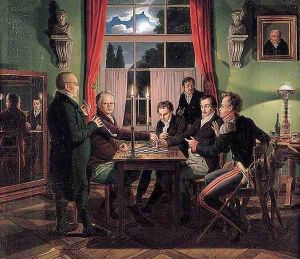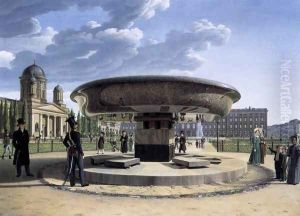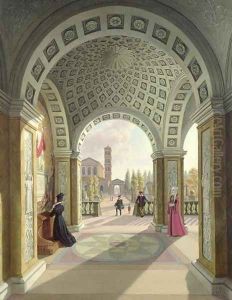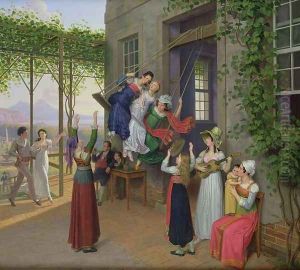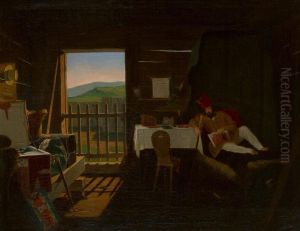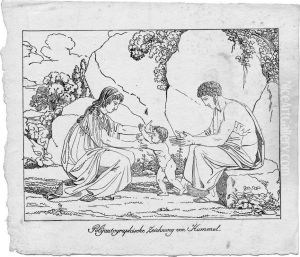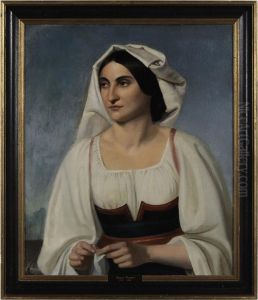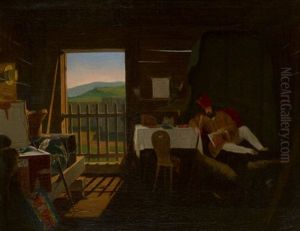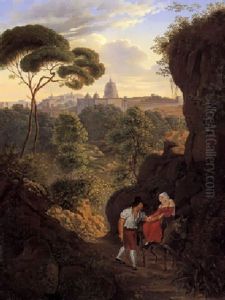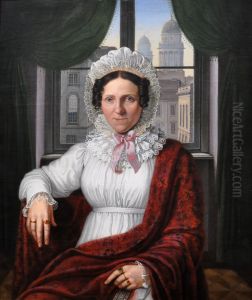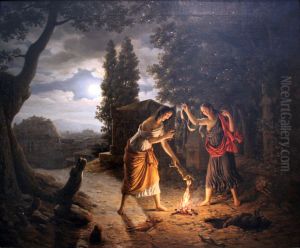Johann Erdmann Hummel Paintings
Johann Erdmann Hummel was a German painter, born on September 11, 1769, in Kassel, Germany. Renowned for his precision and attention to detail, Hummel's work reflects the transition from the Classical to the Romantic periods in European art. He was a prolific artist whose range included portraits, landscapes, and particularly detailed studies of optical phenomena and reflections, which are considered some of his most remarkable contributions to the art world.
Hummel moved to Berlin in 1792, where he initially worked as a porcelain painter. His talent quickly garnered attention, leading to his appointment as a professor at the Berlin Academy of Art in 1819. This position allowed him to influence a generation of artists, imparting his meticulous approach to painting and drawing.
One of Hummel's most famous works is 'The Granite Bowl in the Lustgarten' (1831), which showcases his fascination with light and reflection. This painting, among others, illustrates his ability to capture the texture and materiality of objects, earning him a reputation for almost hyper-realistic depictions.
Despite his focus on the technical aspects of painting, Hummel's work also conveys a sense of the Romantic spirit through its emphasis on the sublime and the meticulous portrayal of natural and architectural elements. His artworks are characterized by a keen observation of his subjects, which he rendered with exceptional clarity and detail.
Johann Erdmann Hummel's contributions to German art were significant during his lifetime, though he is less well-known today outside of Germany. He passed away on October 26, 1852, in Berlin. His legacy, however, lives on through his detailed studies and paintings, which continue to be studied for their technical precision and clarity.
